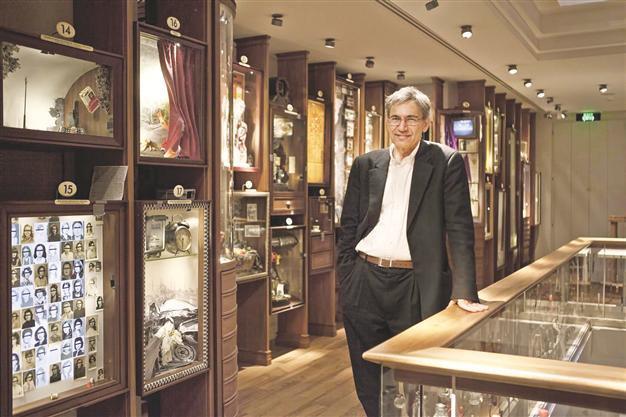Museum of Innocence echoes around the world
ISTANBUL - Hürriyet Daily News

In a bright, wine-red building in Çukurcuma, the Museum of Innocence houses real and fabricated artifacts from everyday Turkish life between 1950 and 2000.
As Nobel Prize-winning Turkish writer
Orhan Pamuk realized a long-nurtured dream on April 28 with the opening of an actual “Museum of Innocence” – a collection of relics of a half-century of ordinary life – as depicted in his 2008 novel of the same name, the museum has attracted great interest around the world.
The museum has drawn interest on every continent as it is the first example of its kind. A press conference held in Istanbul in April hosted many journalists from Cuba, Israel, Spain and Korea. Media from different parts of the world has raised interest in every country.
Pamuk set out “not to do a spectacular or monumental museum but something in the backstreets, something that represents the daily life of the city,” he said during the April press conference.
More than 100 journalists from around the world attended the opening of the museum. Even though two months have passed, reviews of the museum and articles about it are still raising interest in Asia, Latin America, the Middle East and the U.S. Television channels, journals, magazines and dailies are still visiting the museum, according to a written statement from the museum’s PR agency.
In world media The Washington Post wrote, “This is a unique project of a novelist which has never been seen in the world,” and The Wall Street Journal wrote, “This is the only museums like this in the world.”
The Wall Street Journal delivered the news with an interview with Pamuk. According to The Wall Street Journal’s article, the museum is one of the most original ones in the world, and there is no other example like it in the world. The daily also said that with this project Pamuk has directed literature into another dimension.
The New York Times, The Times, Financial Times and International Herald Tribune also delivered the news with interviews and reviews. Financial Times said, “This is a postmodern wonder cabinet,” and added that the museum revealed a deep meaning of the city with its exhibition style and it also exhibited toys.
From France, prominent dailies such as Le Monde, Nouvelle Observateur and Le Figaro delivered the opening announcement of the museum with interviews with Pamuk.
Le Figaro said, “This is a museum between reality and dream.” France24 television channel interviewed Pamuk. Arte showed the museum and published a detailed interview about the museum.
Spain also published many articles about the opening of the museum. El Munda and El Pais included detailed news articles about the museum.
BBC Radio, prominent Middle East channel Al Jazeera and German channel ARD also reported on the museum. Britain-based daily The Guardian shared Orhan Pamuk’s manifesto of museums. Italian daily La Repubblica, German Zeit and Der Spiegel, Danish daily Politiken and Norwegian daily Dagbladet writers also wrote about the museum and shared museum reviews with their readers.
The museum’s opening was followed not only in Europe but on other continents as well. For example, state-run Cuba News Agency, China state television CCTV, Indian The Hindu and Australian International Business dailies and channels delivered the news about the museum. AFP news agency delivered the news to the whole world on the day of the opening.
Media in Canada, Israel, Macedonia, Slovenia, Greece, the Netherlands, Sweden, Japan, Belgium, Saudi Arabia, the Czech Republic, Malaysia and South Korea have also reported the formation of the Museum of Innocence.
Real life artifactsSituated in a bright, wine-red building in the neighborhood of Çukurcuma, the Museum of Innocence houses real and fabricated artifacts from everyday Turkish life between 1950 and 2000 in homage both to the novel and to Pamuk’s Istanbul.
Pamuk designed the museum with artifacts inspired by Füsun, the lover of the protagonist Kemal in the novel of the same name. The museum is situated in an old building in Çukurcuma that was made in 1897. The museum is the visual aspect of Kemal and Füsun’s love story. Visitors are able to see the 4,213 cigarettes that Füsun smoked, while each story in the museum reflects a period from the past life of Istanbul.
Turkey,
